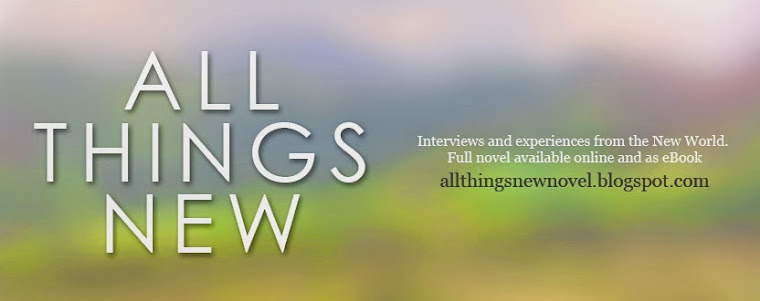The idea behind this novel first occurred to me in 2010. During the summer of that year, I tried my hand at a few passages, but the result was bland and riddled with issues. Disappointed, my motivation for the project evaporated. I knew that if I wasn’t enthusiastic about writing it, no one would be enthusiastic about reading it.
And so the fledgling idea remained just that–a few pages of text in a remote file on my laptop’s hard drive. I’d stumble across it occasionally, reading through what I’d written with mixed feelings. I knew there was a solid concept in there somewhere, and I wished someone would develop it, but I wasn’t sure that someone should be me.
One of my foremost concerns was how a book like this would be received. I assumed that some would be offended by my portrayal of post-Armageddon society. Perhaps they would feel that my book was a transgression in over-speculation. At the very least, there would be a flood of those who disagreed strongly with my depictions. Maybe it was best to just keep my ideas to myself.
And then 2013 came along. Two things happened that made me reexamine my project. The first was that year’s District Convention, which featured two dramas set in the future–one at the start of the Great Tribulation, the other after the Resurrection. The second was the yearly calendar, which featured six vivid paintings depicting the New World. In the corner of each page, a small question box encouraged us to think about what we wanted to do in Paradise.
I couldn’t help but think back to the writing project I’d abandoned. A myriad of questions begged answers in my head that I wanted desperately to explore on paper: How would the U.N. attack false religion? How would the Witnesses later be targeted? How would Jehovah protect his people? What would Armageddon be like? What (and who) would be left? How would we reorganize? Communicate? Travel? Rebuild? What would return to perfection be like? How would a perfect child think? And, perhaps the most intriguing question of them all: What would the Resurrection be like?
Thus, in August of 2013, I returned to my novel. I wrote at a swift pace, with a loose quota of 2,000 words a day and an ultimate goal of 100,000 words, the length of an average paperback. As you might imagine, writing a novel takes determination, and writing is just half the effort. It involves hours upon hours of research, editing, and–in the case of a story with spiritual themes–lots of meditation.
Of course, the stories here are fictional. The events and characters are nothing more than my imaginative renderings of what could be. Still, I’ve done my upmost to align the details of the stories with our current understanding of Bible prophecy. Where that understanding is unclear or incomplete, I have bridged the gaps with reasonable hypothesis. Where some aspect of a story resembles a Biblical account, I’ve tried to conclude the likeliest outcome based on precedent. After all, Divine destruction is nothing new; neither are Divinely-backed construction projects.
Does this mean that I believe future events will play out as the stories describe? Not necessarily. They might, but I expect it’ll be much more surprising (and more miraculous) than anything I could invent or write. So please, as you read through the novel in your hands, remember: I’m not making predictions. I’m merely exploring one stream of possibilities.
But one thing I am certain of–as are you, I'm sure–is that whatever happens in the end, each one of us will have a story to tell. Let that story be one of courage, integrity, and faith.
-EK Jonathan
